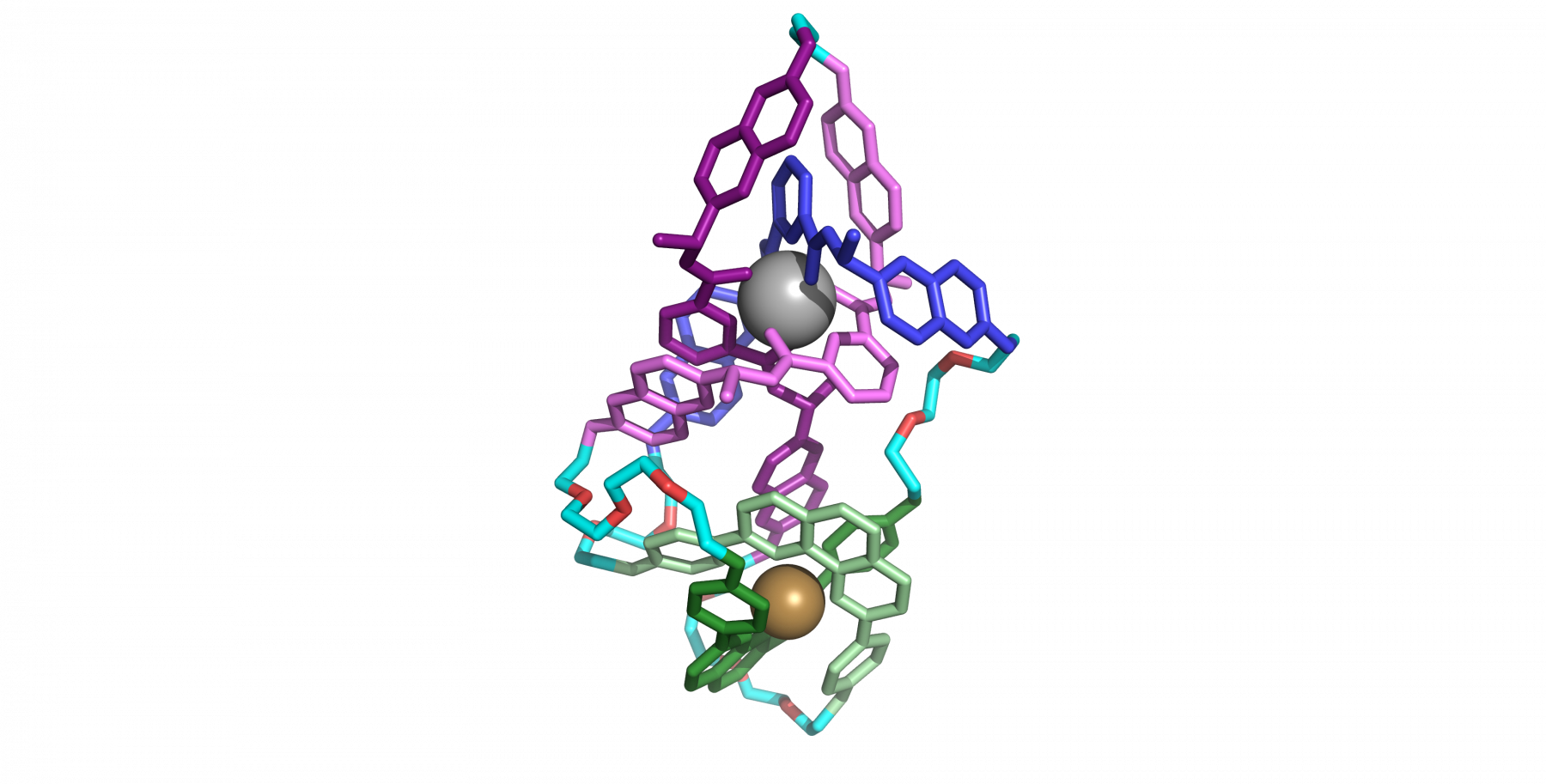The properties of knots are exploited in a range of applications, from shoelaces to the knots used for climbing, fishing and sailing. Although knots are found in DNA and proteins, and form randomly in other long polymer chains, methods for tying different sorts of knots in a synthetic nanoscale strand are lacking. Molecular knots of high symmetry have previously been synthesized by using non-covalent interactions to assemble and entangle molecular chains, but in such instances the template and/or strand structure intrinsically determines topology, which means that only one type of knot is usually possible. Here we show that interspersing coordination sites for different metal ions within an artificial molecular strand enables it to be tied into multiple knots. Three topoisomers—an unknot (01) macrocycle, a trefoil (31) knot, and a three-twist (52) knot—were each selectively prepared from the same molecular strand by using transition-metal and lanthanide ions to guide chain folding in a manner reminiscent of the action of protein chaperones. We find that the metal-ion-induced folding can proceed with stereoinduction: in the case of one knot, a lanthanide(iii)-coordinated crossing pattern formed only with a copper(i)-coordinated crossing of particular handedness. In an unanticipated finding, metal-ion coordination was also found to translocate an entanglement from one region of a knotted molecular structure to another, resulting in an increase in writhe (topological strain) in the new knotted conformation. The knot topology affects the chemical properties of the strand: whereas the tighter 52 knot can bind two different metal ions simultaneously, the looser 31 isomer can bind only either one copper(i) ion or one lutetium(iii) ion. The ability to tie nanoscale chains into different knots offers opportunities to explore the modification of the structure and properties of synthetic oligomers, polymers and supramolecules.
Download “Article preprint” AAM-Aug2020_TyingDiffMolKnots_Nature.pdf – Downloaded 272 times – 3 MB
Download a copy of the manuscript (preprint version)

